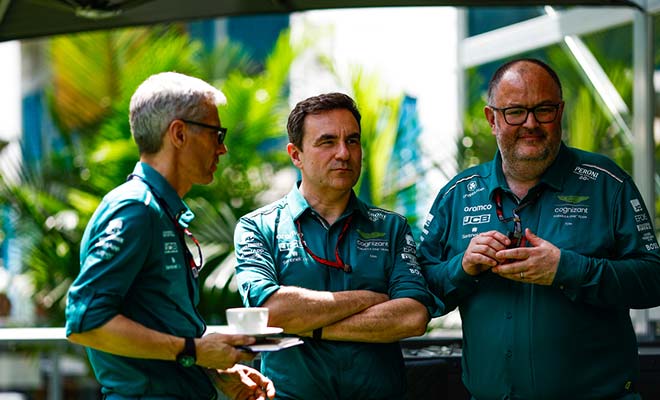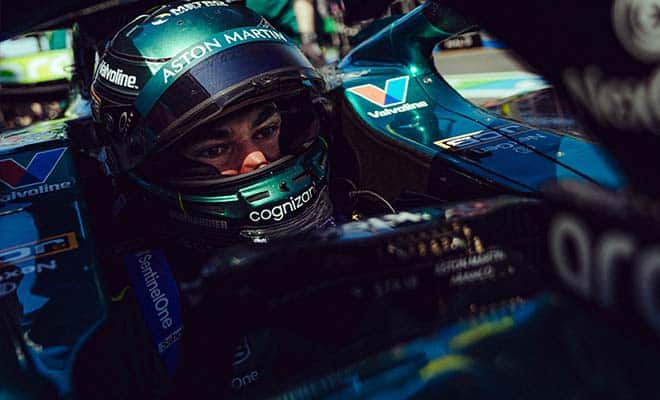In Formula 1, the art of strategy extends beyond mere numbers, blending sophisticated simulations with the unpredictability of live race conditions for the ultimate high-stakes game.
In modern F1, strategy must merge, on one hand, mathematical forecasting models, and on the other, real-time adaptation to on-track conditions.
Thus, a savvy F1 strategist is one who trusts the numbers, yet not blindly.
Finding this balance is, of course, challenging, especially when F1 teams today have access to thousands of data points, creating an illusion of invincibility.
How do F1 teams craft their computer models to simulate Grand Prix scenarios, you might wonder?
Tom McCullough, Head of Performance at Aston Martin F1, shed some light on this behind the scenes of his team…
“We craft most of our simulation tools in-house and are always striving to enhance and refine them. Strategy engineers must continually develop the tools we use to make decision-making increasingly straightforward and effective.”
“Individuals capable of developing these simulation tools are immensely valuable to the team. Proficiency in coding and comfort with programming languages such as Python, Java, MATLAB, and C# will set you apart from other candidates.”
“Through AI and machine learning, they simulate thousands of scenarios and even update simulations and strategies during the race – based on real-time data from the track.”
“Strategy engineers typically have a background in mathematics and hold a robust engineering degree. Equipped with excellent problem-solving skills and the ability to think logically under pressure, they must be able to understand and analyze large volumes of data.”
Thus, a knack for mathematics is essential, but so is agility and flexibility… and the ability to abandon strategies, even those that were laboriously developed.
“For those interested in a career in this field, we seek individuals who grasp both the theoretical and practical aspects – because if you strategize solely with numbers, it’s bound to go awry.”
“For instance, it’s quite straightforward to model how tires should perform in a race after the EL1, but one must consider that conditions from that session might not reflect those the tires will face in the race. The track may have evolved in terms of grip levels by several seconds, the temperature could be higher, car settings might differ, and, consequently, tires will behave differently.”
“In theory, strategy is very simple. It’s easy to determine the fastest path from the start line to the checkered flag when you know the race duration, tire lifespan, tire degradation, the pace difference between tire compounds, and time lost in the pits, but the challenge lies in being able to predict and react to what actually happens in reality.”
“You’re constantly reacting to live events and data. There are so many variables: the actual tire degradation, the real performance of the tires, track positions, the safety car, what the competitors are doing.”
“It’s one of the toughest tasks on the grid.”
To listen or not to listen to the drivers? That is the question
Another factor comes into play: communication with the drivers. Here too, finding the right balance is key, continues the Aston Martin F1 team lead. Listen to them, but not blindly.
“You need to ensure your drivers understand the strategy. Before a race, we discuss various plans with the drivers, so they know about plans A, B, C, and so on. Then, during the race, if a driver says: ‘I’m really struggling with the tires, I don’t think we can do plan A, I think we should consider plan B,’ that’s very valuable feedback, and we can react based on that information.”
“We might choose to switch to plan B, another plan, or, for instance, a tire engineer might provide more insight at that stage and add: ‘The driver says this because the tires are overheating, but if we wait for the tires to cool down, the grip level will improve, and we can stick to plan A.'”
“But blindly following every piece of advice and suggestion from a driver is very risky.”
“For example, on a drying track, a driver might call for a pit stop to switch from dry to wet tires, but he doesn’t see the pit stop windows. It’s up to us to give him the complete picture, explaining that changing tires could drop him into traffic behind drivers on intermediate tires and lose more time than staying out on track in clean air.”

F1’s High-Stakes Game: Strategy Beyond the Numbers. F1’s High-Stakes Game: Strategy Beyond the Numbers
- ReadMore>Vettel Critique F1 Netflix Series
- Following us on Facebook and Twitter
